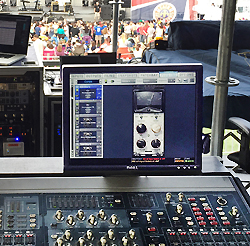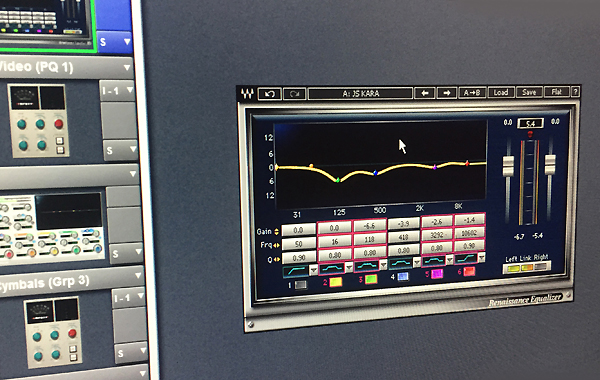
When using MultiRack, you’re able to create processing groups, and then turn on automatic group latency compensation in the Group Properties screen.
This automatically aligns the members of the group, such as a drum or vocal group, allowing for more processing on some channels than others without the latency becoming audible.
Avid consoles provide automatic delay compensation. It kicks in on individual channel inserts and can also be used when building parallel compression buses (where a dry group and processed group are brought into the mix together).
In order to build a proper compression bus with delay compensation enabled, find a spare empty channel without a preamp channel patched, and assign it to the L+R mix, dry group, and processed group. Seeing this channel assigned to all the buses will make the delay compensation align the groups together with the L+R bus, compensating properly for the latency introduced by the plugins in the processed group.
That said, what if you’re in a situation where you don’t want to have automatic delay compensation (such as mixing monitors)? Right-clicking on any plugin process will tell you the total amount of latency going on behind any plugin, and using this information, you can build parallel compression groups that are time-aligned without using delay compensation.
Simply calculate the total latency of the processed group by finding the total process delay time (that number you found when right-clicking on a plugin process), and then insert an instance of Time Adjuster on the dry group. Right-click on Time Adjuster to find it’s native delay time, subtract that from the processed group’s number, and adjust the time that many samples. Now the buses are aligned.
Mixing with plugins is incredibly rewarding, especially as you learn how to use them more efficiently. Quality plugins can take an otherwise very capable console and transform it into a completely different-sounding desk with expanded capabilities.
And a final note, regarding housekeeping: if you’re sending a desk back to a shop from a rental or company show after using a lot of plugins, do the people checking it in a favor and deactivate any plug-in instances that you used that aren’t licensed on the console. This helps avoid someone having to stand there and click “cancel” a hundred times. The shop staff will thank you!
Joe Shambro is a free-lance live sound engineer and audio technology writer based in St. Louis.

